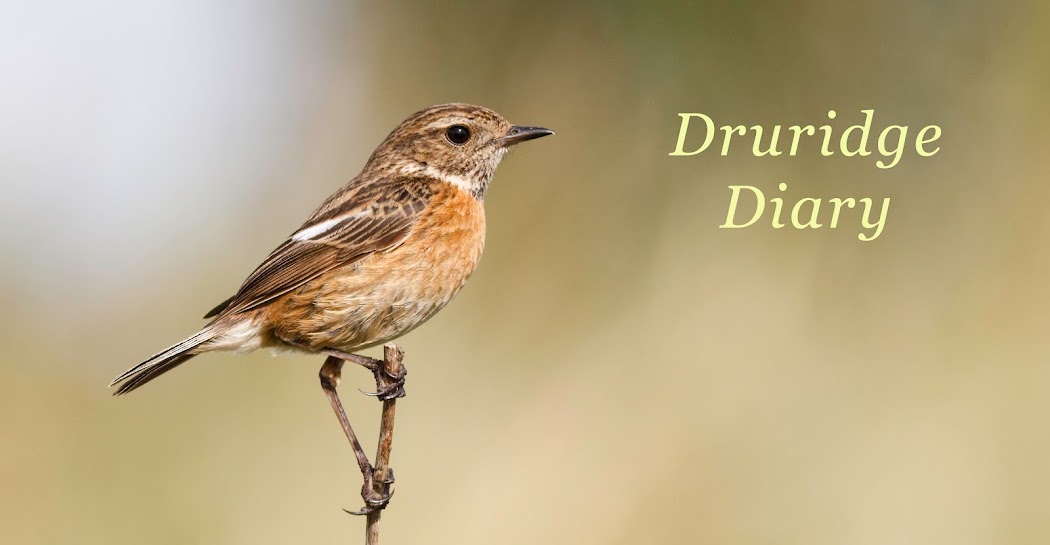 |
| One of the Exmoor ponies |
As welcome as they are, it's great to see some grazing, I fear it will take more than two ponies to get the Budge fields into suitable condition for lapwings by April. Hopefully, this is just the advance party.
After an aborted ringing session at Ellington Pond (due to the strengthening cold NW) I headed to Druridge for an afternoon visit. The cold NW was still blowing and there were a few drops of rain.
Admiring our coppicing work from Friday (I am still in pain!), a flock of siskins passed through, even feeding on some of the cut material, among them were a few tits, chaffinches and a stonking male brambling - see, it's only been cut for two days and its already bringing the birds in!
The Budge fields are still holding decent numbers of wildfowl, shoveler and gadwall now number 6 and there were two snipe, the first since the snows in December.
Spring is here, the coltsfoot are in flower and I clocked the first summer visitors arriving back today, well flying through, four lesser black-backed gulls moving north offshore.
 |
| Coltsfoot |
Coltsfoot is odd in the plant world in that it produces its flowers before it grows its leaves. It is also used for treating coughs, so if you're feeling a bit wheezy, you know where to find it!
On Druridge Lane, the little owl was still in its usual spot.
68 brambling
69 snipe
70 lesser black-backed gull






